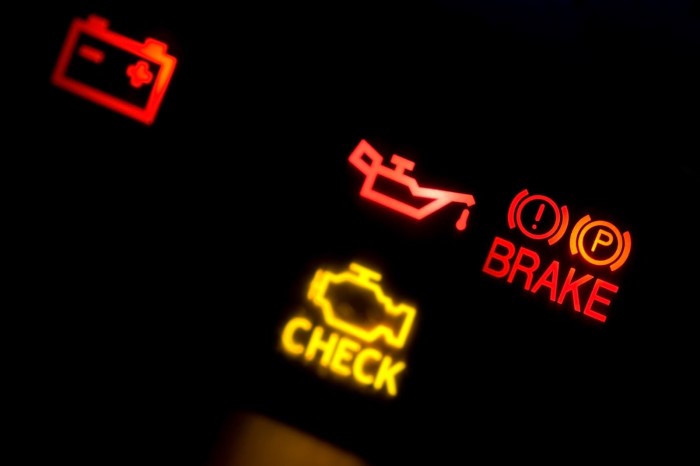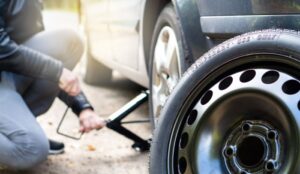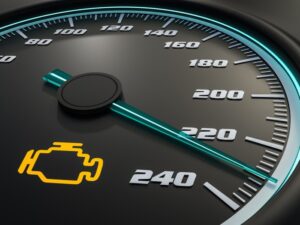
If you own a Nissan vehicle, you may have encountered the dreaded check engine light at some point. This warning light, also known as the malfunction indicator lamp (MIL), can cause anxiety and uncertainty among car owners. However, it’s important to remember that the check engine light is an indication that something is amiss with your vehicle, and it shouldn’t be ignored. In this article, we will explore the common causes behind the Nissan check engine light and provide you with some practical solutions to address these issues.
Understanding the Check Engine Light
The check engine light in your Nissan serves as an early warning system for potential issues with your vehicle’s engine or emission control system. When the light illuminates, it indicates that the engine’s computer, known as the engine control unit (ECU), has detected a problem. It’s crucial to take this warning seriously and address the underlying cause promptly to prevent further damage and potentially expensive repairs.
Common Causes of the Nissan Check Engine Light
There are several common causes behind the Nissan check engine light. Let’s explore each of them briefly:
1. Loose Gas Cap
A loose or improperly tightened gas cap can trigger the check engine light. The gas cap plays a crucial role in maintaining the pressure within the fuel system. If it’s loose, fuel vapors can escape, leading to an emission system malfunction.
2. Faulty Oxygen Sensor
Oxygen sensors measure the amount of oxygen in the exhaust gases. A faulty oxygen sensor can provide incorrect readings, causing the engine to run less efficiently and triggering the check engine light.
3. Malfunctioning Mass Airflow Sensor
The mass airflow sensor measures the amount of air entering the engine. A malfunctioning sensor can disrupt the air-fuel mixture, leading to poor engine performance and the activation of the check engine light.
4. Issues with the Catalytic Converter
A failing catalytic converter can trigger the check engine light. This component helps reduce harmful emissions, and when it malfunctions, it can affect the engine’s efficiency and trigger a warning.
5. Failing Ignition Coil
Ignition coils are responsible for creating the spark that ignites the air-fuel mixture in the engine cylinders. A failing ignition coil can cause misfires and trigger the check engine light.
6. Problems with the Spark Plugs
Worn-out or damaged spark plugs can lead to misfires, reduced fuel efficiency, and engine performance issues. Faulty spark plugs can also cause the check engine light to illuminate.
7. Faulty EGR Valve
The Exhaust Gas Recirculation (EGR) valve helps reduce emissions by recirculating a portion of the exhaust gases back into the combustion chamber. A faulty EGR valve can disrupt this process and trigger the check engine light.
8. Defective Throttle Position Sensor
The throttle position sensor monitors the position of the throttle valve. If it malfunctions, it can affect engine performance and trigger the check engine light.
9. Engine Misfire
An engine misfire occurs when one or more cylinders fail to ignite properly. This can be caused by various factors, such as worn-out spark plugs, faulty ignition coils, or fuel delivery issues, and it can trigger the check engine light.
10. Low Battery Voltage
Insufficient voltage from the car’s battery or charging system can cause the check engine light to come on. It’s important to ensure that your battery and charging system are in good condition.
11. Issues with the Evaporative Emission Control System
The evaporative emission control system prevents the release of fuel vapors into the atmosphere. If there’s a leak or malfunction within this system, it can trigger the check engine light.
12. Transmission Problems
Transmission issues, such as slipping gears or solenoid malfunctions, can also cause the check engine light to illuminate.
13. Sensor Failures
Various sensors within the engine and emission control system can fail over time, leading to the activation of the check engine light.
14. Engine Control Unit (ECU) Malfunction
In rare cases, the engine control unit itself may malfunction, leading to the check engine light turning on.
15. Other Potential Causes
There are numerous other potential causes behind the check engine light, including fuel system problems, vacuum leaks, wiring issues, or mechanical failures. Proper diagnosis is crucial to determine the exact cause.
How to Address the Nissan Check Engine Light
When the check engine light illuminates in your Nissan, here are some steps you can take to address the issue:
1. Check the Gas Cap
Start by checking if your gas cap is properly tightened. If it’s loose, tighten it securely and see if the check engine light goes off after a few driving cycles.
2. Use an OBD-II Scanner
An OBD-II scanner is a diagnostic tool that can read the error codes stored in your vehicle’s ECU. Use the scanner to retrieve the error codes and get more information about the specific problem causing the check engine light.
3. Replace Faulty Oxygen Sensors
If the oxygen sensors are faulty, they should be replaced to ensure accurate readings and proper engine performance.
4. Clean or Replace the Mass Airflow Sensor
Cleaning or replacing the mass airflow sensor can help restore proper airflow and resolve issues related to engine performance.
5. Repair or Replace the Catalytic Converter
If the catalytic converter is malfunctioning, it may need to be repaired or replaced to restore proper emission control and resolve the check engine light issue.
6. Replace Failing Ignition Coils
Failing ignition coils should be replaced to ensure proper ignition and prevent misfires that trigger the check engine light.
7. Inspect and Replace Spark Plugs
Regularly inspect and replace worn-out or damaged spark plugs to maintain engine performance and prevent misfires.
8. Clean or Replace the EGR Valve
If the EGR valve is faulty, cleaning or replacing it can help restore proper exhaust gas recirculation and resolve check engine light issues.
9. Check and Replace the Throttle Position Sensor
If the throttle position sensor is malfunctioning, it should be checked and replaced if necessary to ensure proper engine performance.
10. Resolve Engine Misfire Issues
Address engine misfires promptly by identifying and fixing the underlying cause, which may involve replacing spark plugs, ignition coils, or addressing fuel delivery issues.
11. Check and Charge the Battery
Ensure that your vehicle’s battery is in good condition and fully charged. Low battery voltage can trigger the check engine light.
12. Address Evaporative Emission Control System Problems
If there are issues with the evaporative emission control system, such as leaks or faulty components, they should be addressed to resolve the check engine light problem.
13. Seek Professional Help for Transmission Issues
If you suspect transmission problems as the cause of the check engine light, it’s advisable to seek professional assistance from a qualified mechanic or transmission specialist.
14. Repair or Replace Faulty Sensors
If any other sensors are found to be faulty, they should be repaired or replaced to ensure accurate readings and proper engine operation.
15. Consult a Mechanic for ECU Diagnosis and Repair
If all else fails or if you’re uncertain about the cause of the check engine light, it’s best to consult a professional mechanic who can diagnose the issue accurately and perform any necessary repairs.
Conclusion
The check engine light in your Nissan should never be ignored. It’s a warning sign that something is wrong with your vehicle’s engine or emission control system. By understanding the common causes and taking appropriate actions, you can address the check engine light issues and ensure the optimal performance and reliability of your Nissan.
FAQs
1. What should I do if my Nissan’s check engine light comes on?
When the check engine light comes on, it’s important to check your gas cap, inspect for any immediate issues, and use an OBD-II scanner to retrieve error codes. Depending on the severity of the issue, you may need to seek professional help or perform specific repairs.
2. Can I drive my Nissan with the check engine light on?
While it’s generally safe to drive your Nissan with the check engine light on for a short distance, it’s recommended to address the underlying issue as soon as possible to prevent further damage and ensure optimal performance.
3. How much does it cost to fix the check engine light in a Nissan?
The cost of fixing the check engine light in a Nissan can vary depending on the specific issue and the required repairs. It’s best to consult a mechanic for an accurate diagnosis and cost estimate.
4. How long does it take to diagnose the check engine light in a Nissan?
The time required to diagnose the check engine light depends on the complexity of the issue. Simple issues can be diagnosed quickly, while more complex problems may require additional time for thorough inspection and testing.
5. Can I reset the check engine light on my Nissan without fixing the underlying issue?
Resetting the check engine light without addressing the underlying issue is not recommended. The light serves as a warning sign, and resetting it without resolving the problem can lead to further complications and potential damage to your vehicle.






